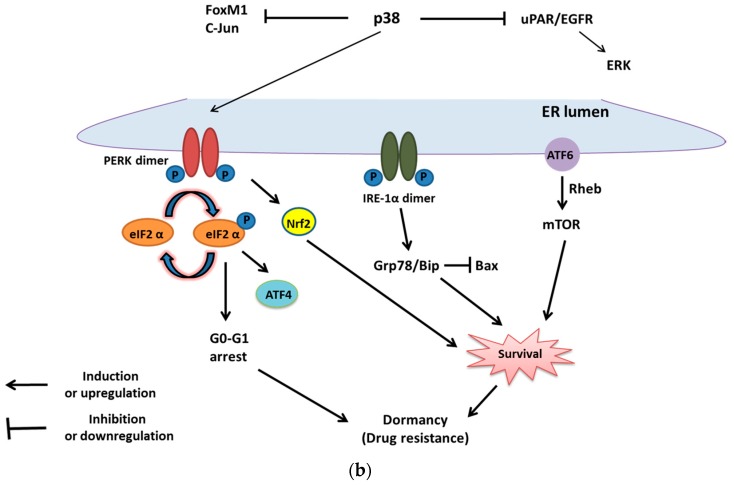Figure 3.
The role of dormancy in metastasis and chemoresistance of cancer cells. (a) Dormancy-regulated metastasis affected by the balance between p38 and ERK. When tumor cells disseminate, there are three different outcomes in different microenvironments. Firstly, with upregulation of MAPK p38 combined with decreasing ERK signals, tumor cells degenerate without metastasis during dissemination; Secondly, increasing ERK with decreasing MAPK p38 promotes metastasis; Thirdly, decreasing ERK with increasing p38 brings about metastatic cells dormancy; (b) UPR-induced dormancy is associated with cancer cell survival and chemoresistance. MAPK p38 can suppress FoxM1, c-Jun and the uPAR (Urokinase-type plasminogen activator receptor) transcript, which is crucial for the activation of ERK. Furthermore, it can also trigger the downstream signaling of UPR. Activated PERK can phosphorylate elF2α for the G0–G1 arrest and induce ATF4 for survival. Besides, phosphorylated elF2α can trigger ATF4 for survival. Activated IRE-1α can induce Grp78/Bip for survival as well as block the pro-apoptotic signal, Bax. Furthermore, ATF6α can promote survival through the mTOR signaling pathway. Redrawn from Sosa et al. [48].


